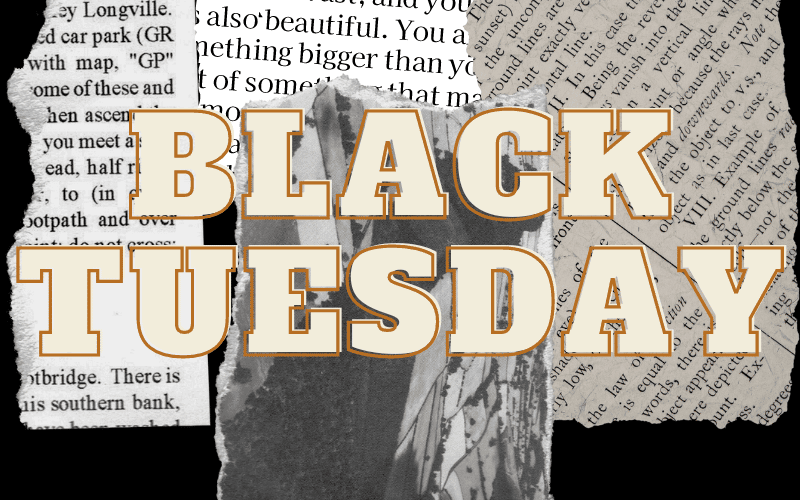The 1929 Wall Street Crash, also known as “Black Tuesday,” “the Great Crash,” or “the Crash of 1929,” was a significant decline in the value of American stocks that occurred in the late 1930s. It began in September and came to an end when share prices on the New York Stock Exchange crashed in the middle of November.
The Stock Market Crash of 1929 occurred on October 29, 1929, when Wall Street investors transacted roughly 16 million shares on the New York Stock Exchange in a single day. The loss on that day was in the billions.
The Great Depression, the deepest and longest-lasting economic downturn in the history of the Western industrialized world up to that point, began as a result of that incident, also known as “Black Tuesday,” which sent America and the rest of the industrialized world spiraling downward.
When the full scope and duration of the effects are considered, it was the most devastating stock market crash in the history of the United States.
The crash, which came after the September crash on the London Stock Exchange, marked the start of the Great Depression.
So in this article, we look at the history of Black Tuesday and its economic importance in the United States.
What Happened During Black Tuesday?
On October 29, 1929, known as “Black Tuesday,” there was a sharp decline in the stock market, with the Dow Jones Industrial Average (DJIA) being particularly hard hit due to high trading volume.
Since panicked stockholders were frantic and wanted to sell their shares they were forced to sell three million shares in a half-hour and made a $2 million loss.
Stock price announcements were delayed by several hours on the ticker tape. Because of this, investors were unaware of their losses. They called their brokers in a panic. They sent telegrams when they had trouble getting through.
According to Western Union, the number of telegrams sent that day tripled. Orders were physically written on pieces of paper back then by traders. The orders were backlogged due to the volume of trades. They were simply thrown into trash cans by traders. Fistfights started, and the NYSE board members were reluctant to close the market because doing so might have exacerbated the panic.
The leading banks of the day made attempts to halt the crash. Shares of stock were purchased by Morgan Bank, Chase National Bank, and National City Bank of New York.
They aimed to boost market confidence once more. The intervention, however, gave the exact opposite message. Investors saw it as proof of a bank panic.
Therefore, one of the biggest one-day drops in stock market history occurred when the DJIA dropped 12%. The panic sell-off, which effectively brought an end to the Roaring Twenties and ushered the world economy into the Great Depression, saw the trading of more than 16 million shares.
Note that:
- The term “Black Tuesday” refers to October 29, 1929, when the Dow Jones Industrial Average (DJIA) experienced a sharp decline.
- The Great Depression began on Black Tuesday and continued until the start of World War II.
- Black Tuesday was brought on by a combination of slowing economic growth, excessive debt was taken out to buy stocks, and international protectionist measures.
- The effects of Black Tuesday on the American economic system and trade policy were extensive.
What Caused the Black Tuesday?
#1. Poor means of communication:
The way stock market players in the 1920s manipulated the market contributed to some of the panics that led to Black Tuesday. They didn’t have immediate access to information as we now do on the internet.
#2. Poor technology:
A ticker tape machine printed stock prices onto a strip of paper. The ticker tapes were unable to keep up with the rate at which share prices were falling. Because nobody knew how bad it was, panic set in.
#3. Poor conflict management system:
On the stock exchange floor, there was utter chaos. Customers screamed and roared. When they learned bad news about the price of a stock, some fell to the ground. Crowds gathered in front of the NYSE. To preserve order, the police were called.
#4. Loan problems:
The new technique for purchasing stocks, known as “buying on margin,” was the other factor contributing to the panic.
#5. Overproduction of goods:
The stock market was booming a month before the crash as a result of the significant overseas demand for American goods following World War I. When the Dow Jones Industrial Average, a benchmark used to measure market performance, reached 381 points, the market had reached its peak.
#6. Buying on margin:
Many people “bought on margin” because they were overconfident that the market would keep expanding. Purchasing on margin entails using primarily borrowed funds to buy shares. People had excessive market confidence, which made borrowing loans comfortable for both banks and borrowers.
Therefore, investors could place large stock orders with just 10% to 20% down. They made use of the cash they lent to their brokers.
The brokers called in the loans when stock prices dropped. Many people discovered that repaying the loans consumed all of their life savings.
#7. Oversupply of goods:
Additionally, the manufacturing and agricultural sectors overproduced goods. There was an oversupply because factories produced more goods than there was a need for, which resulted in lower prices. This caused losses for numerous businesses, which in turn caused their share prices to fall.
#8. Poor government policies:
Republican presidents’ laissez-faire economic philosophies served as the backdrop to all of this. The market can correct itself, and government regulation will only impede economic growth, according to the laissez-faire economic theory, so the government shouldn’t get involved in the market.
What Day Was Black Tuesday?
“Black Tuesday” occurred on October 29, 1929, when investors transacted approximately 16 million shares on the New York Stock Exchange in a single day.
This caused thousands of investors to lose everything after losing billions of dollars. With some stocks having no buyers at any price, the panic selling reached its peak.
The Dow dropped another 30.57 points, or 11.73%, for a two-day total loss of 68.90 points, or 23.05%.
What is Black Thursday?
On October 24, 1929, “Black Thursday” occurred, marking the start of the Stock Market Crash of 1929, the worst stock market crash in American history. The market lost 11% at the start of the day. By the time the trading day was over, 12.9 shares had been traded, a record low.
Black Thursday also signaled the start of the Great Depression, which lasted from 1929 to 1939, as well as the end of a bull market that lasted for ten years.
- This led companies to start using all available resources, including brokerage trading platforms, to prepare themselves for the ups and downs of the stock market.
- These instruments can assess potential risks related to trading opportunities and analyze financial market transactions and activities.
- Brokerage trading platforms became very important as they made it easier for traders and investors to open, close, and manage market positions.
What Was The Cause of Black Thursday?
#1. Extravagant lifestyle:
Wealth and excess were prevalent themes in the 1920s. The U.S. stock market experienced rapid growth throughout the decade and reached its peak in August 1929, at the height of the Roaring Twenties.
#2. Poor communication and rumor:
The exodus of foreign investors and significant speculative activity, however, caused price declines by the fall of 1929, which made investors lose faith and cause panic selling. Stocks became overvalued as a result of rising unemployment and declining production.
#3. Unemployment:
Low employee wages, unmanageable debt, an agricultural recession, and an abundance of bank loans that borrowers couldn’t repay were additional factors that contributed to Black Thursday and the 1929 stock market crash.
#4. Agricultural decline:
More specifically, as the cost of essential agricultural supplies rose during and after World War I, many farmers accumulated debt. Additionally, farm product prices dropped, making it difficult for farmers to repay their loans.
What is the Difference Between Black Thursday and Black Tuesday?
Black Thursday marked the start of the 1929 stock market crash. Morgan Bank, Chase National Bank, National City Bank of New York, and investment firms collaborated to fund $750 million worth of stocks to boost market confidence and counteract the falling market and high trading volume.
This was only a short-term fix, though, as the Dow dropped 13%, setting off panic and Black Tuesday a few days later.
On Black Tuesday, October 29, 1929, the stock market crash that had started on Black Thursday came to an end. Additionally, it signaled the start of the Great Depression, which persisted until the start of World War II.
On Black Tuesday, nobody offered assistance, unlike on Black Thursday, when banks intervened to buy stocks and repair the damage.
Black Tuesday suffered greater losses as a result than Black Thursday. Ultimately, Black Tuesday saw a 12% decline in the Dow Jones Industrial Average (DJIA), one of the biggest one-day drops in stock market history. Thousands of investors lost everything after losing billions of dollars.
What is Another Name for Black Tuesday?
Another name that describes Black Tuesday is “The 1929 Wall Street Crash” or “The Start of the Great Depression”.
Furthermore, coal miners on strike and the Royal Canadian Mounted Police got into a fight on Black Tuesday, also known as the Estevan Riot.
How Much Money Was Lost on Black Tuesday?
On the infamous Black Tuesday, October 29, 1929, when more than 16 million stocks were traded, the situation deteriorated once more. In the end, that day’s stock market suffered a $14 billion loss.
What Happened Immediately After Black Tuesday?
#1. Stock prices went up:
Stock prices had to go up after October 29, 1929, so there was a significant recovery in the weeks that followed. However, as the country descended into the Great Depression, prices generally continued to decline, and by 1932, stocks were only worth about 20% of what they had been in the summer of 1929.
#2. The great depression:
After the events of that day, Black Tuesday became synonymous with The Great Depression. The Great Depression was not solely caused by the 1929 stock market crash, but it did accelerate the global economic downturn, of which it was also a symptom.
During the Great Depression, daily life was challenging for the typical family. The Southern Plains suffered from storms and a severe drought that destroyed crops thereby leading people to move to major cities in search of employment.
#3. The downfall of the Dow Jones industrial average:
Through 1932, when the Dow Jones Industrial Average, a widely-used benchmark for American blue-chip stocks, closed at 41.22, the lowest value of the 20th century and 89 percent below its peak, stock prices continued to decline.
It would take the Dow Jones Industrial Average until November 1954, or roughly 25 years later, to reach its pre-1929 heights.
#4. Unemployment:
By 1933, nearly half of the American banks had failed, and the country’s labor force, or 20 million people, was either unemployed or underemployed.
#5. African americans and women were hit hard:
Considering that they were usually hired last and then became the ones to be fired first, African Americans were particularly hard hit.
The traditional female occupations of the time, such as teaching and nursing, were more protected from market fluctuations than those that depended on them, so women during the Great Depression fared marginally better.
- INFLATION INVESTMENTS: Definition, Types & Best Practices
- DEMAND-PULL INFLATION: DEFINITION, CAUSES & EXAMPLES
- HOW DOES INFLATION AFFECT INTEREST RATES?: Effects of Inflation On
- CHEAP INTERNATIONAL SHIPPING SERVICES AND RATES IN 2023






